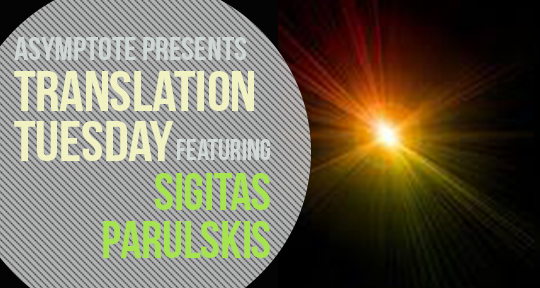This week we bring you a final installation of our series featuring Lithuanian writers inspired not only by these excellent writers, but because the Baltic countries are is this year’s Market Focus at the London Book Fair.
This excerpt of Darkness and Company is by the prolific Sigitas Parulskis. With a healthy sampling of Plato, this piece explores questions of photography, truth, and beauty as a young photographer goes in search of the perfect light to capture a horrific scene of violence and death during the Holocaust. The jarring and unsettling nature of this piece gives us a taste for the rest of Darkness and Company and reveals an incredibly talented writer.
This showcase is made possible by Lithuanian Culture Institute.
The word ‘angel’ was scrawled on the blackboard in chalk. The rest of the sentence had been erased. Angel of vengeance, angel of redemption—it could have been either one.
He got up quietly so as not to awaken the other men and went out into the yard. He couldn’t see the guard, who was probably off dozing somewhere. The Germans were staying at the local police station; the brigade was sleeping in the town’s school. After a night of festivities at a local restaurant, most of the men were indistinguishable from the mattresses spread on the floor.
Vincentas stuffed his camera into his coat and headed off in the direction of the forest. He looked at his watch and saw that it was five in the morning. The sun was just coming up—the best time of the day if you wanted to catch the light. To capture the idea of light, as Gasparas would say. Where could he be now? Underground, probably; still wearing his thick-lensed glasses. Lying in the dark, trying to see the essence of things with his myopic eyes. His grey beard sticking up, his thin hair pressed to his forehead in a black band. Although short-sighted and ailing, he had been a strange and interesting person. His photography students called him by his first name, Gasparas. The photographer Gasparas. It was from Juozapas that Vincentas had first heard about photography, that miracle of light. While still a teenager he had read a few articles and a small book called The Amateur Photographer, and then, when he turned eighteen, he had bought his first camera, a used Kodak retina. But it didn’t go well, so he had found Gasparas. Without his thick-lensed glasses Gasparas couldn’t see a thing. He would take them off, look straight ahead with his strange, empty eyes and say, ‘Now I can see the real world.’

